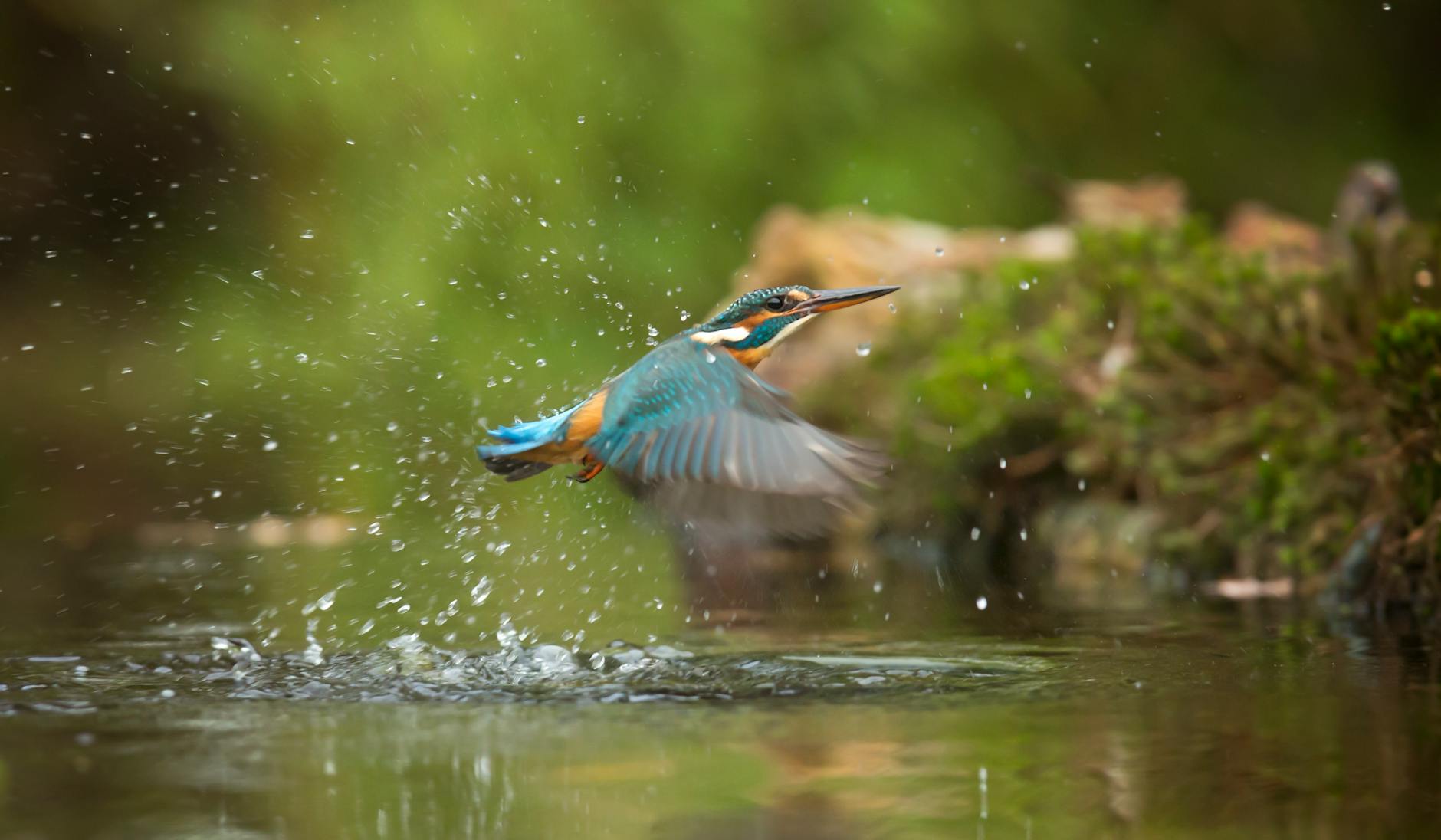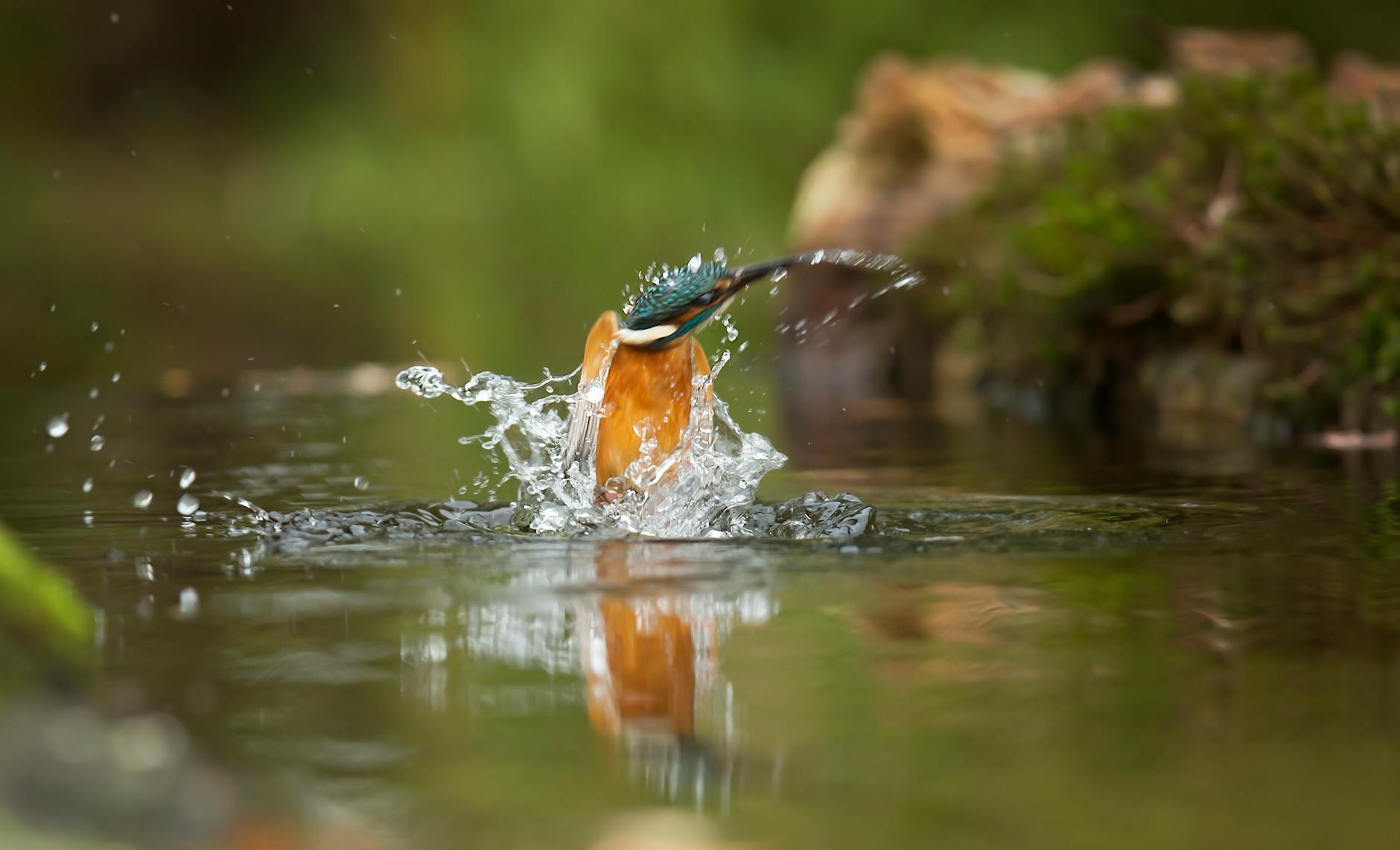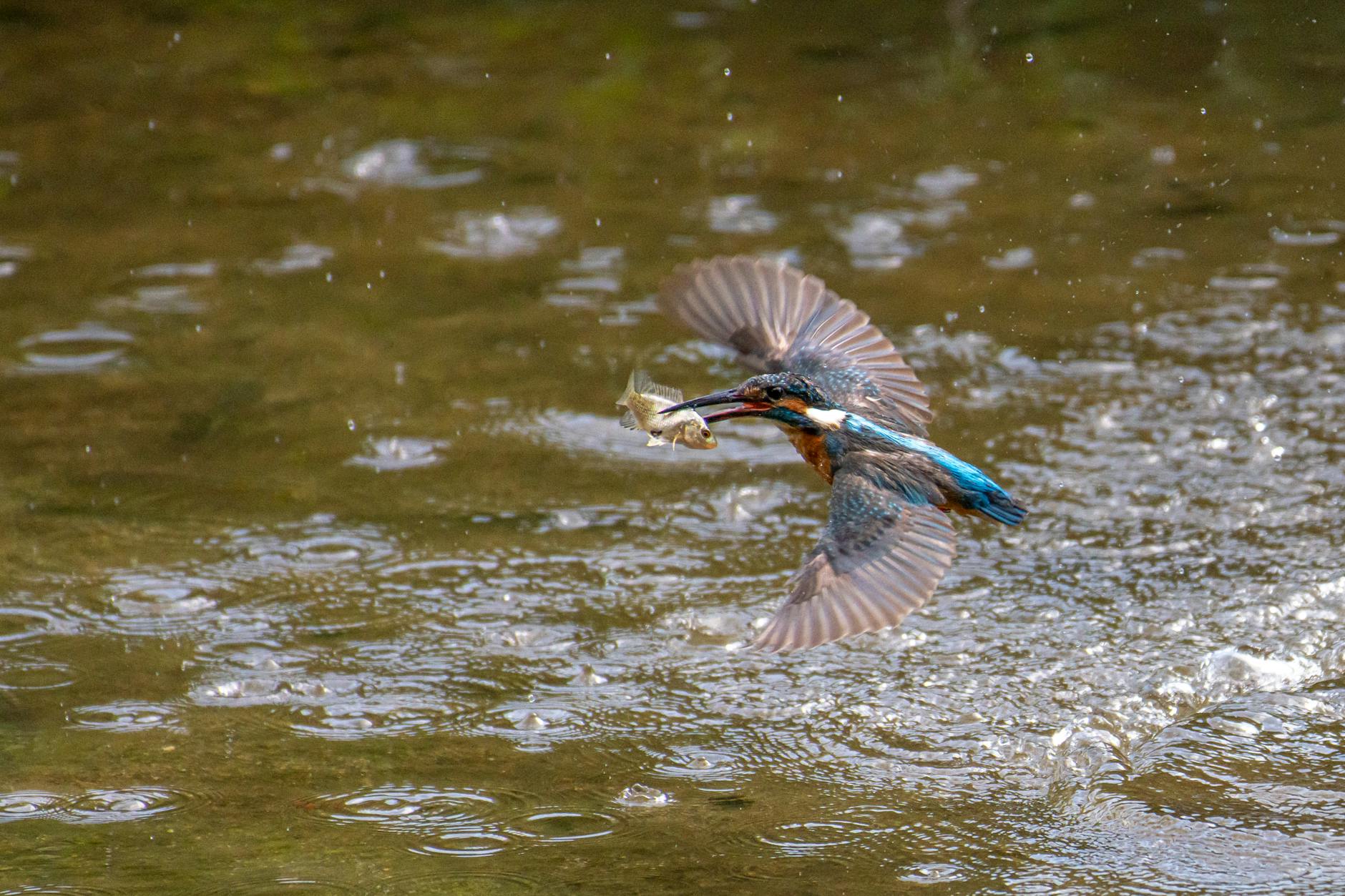What Makes Kingfishers Unique Among Birds? A Close Look at Their Traits and Behaviour
Kingfishers are truly captivating birds, known for their stunning colours and remarkable behaviours. With nearly 100 species around the globe, each unique in its own right, they stand out not just for their beauty but also for their ecological role. These birds are skilled hunters, often seen diving gracefully to catch fish, showcasing their exceptional agility.
In this post, we’ll explore what makes kingfishers so distinctive. From their unique physical adaptations to their intriguing hunting techniques, you’ll gain a deeper appreciation for these birds. Whether you’re a wildlife enthusiast or just curious about nature, understanding kingfishers offers insight into the diversity and complexity of avian life. Get ready to discover the traits that make these birds not just beautiful but essential to our ecosystems.
Physical Characteristics of Kingfishers
Kingfishers possess several physical traits that make them unique among birds. Their appearance is not just for show; each characteristic plays a crucial role in their survival and hunting success. Let’s explore the remarkable features that set these birds apart.
Dramatic Plumage
The feathers of kingfishers are nothing short of spectacular. They display a vibrant array of colours, often featuring striking blues, bright oranges, and deep greens. Each species showcases its own unique patterns that can resemble intricate mosaics. For example, the Belted Kingfisher has a striking combination of blue and white plumage that is particularly eye-catching against the water. The vivid colours are not only aesthetically pleasing but also serve essential functions, such as camouflage while hunting or attracting mates.
- Reflective Qualities: Many kingfisher feathers have microstructures that reflect light, enhancing their colours even further. This can create a dazzling effect as they fly.
- Mimicry and Camouflage: Some species evolve specific patterns to help them blend into their surroundings, making it easier to ambush prey.
For more detailed insights on plumages, visit Birds of the World.

Photo by Monique Laats
Specialised Bill Structure
One of the most distinctive features of kingfishers is their long, sharp bills. These bills are perfectly adapted to their hunting method, allowing them to catch fish with precision. The structure of the bill varies slightly among species, depending on their specific dietary needs.
- Hunting Tool: The pointed tips of their bills help puncture the fish’s skin with ease. This feature is particularly useful for catching slippery prey.
- Feeding Adaptability: Different species possess bill shapes that reflect their hunting strategies—some have straighter bills for catching fish, while others have hooked bills suited for snatching insects.
Learn more about their unique bill structures at Animal Diversity.
Compact Body and Short Legs
Kingfishers have a distinctive body shape that contributes to their agility in flight and efficiency when perching. Their compact body and short legs help them remain aerodynamic, making them exceptional fliers.
- Flight Efficiency: The compact form enables quick, darting movements, essential for catching prey mid-air or during a dive.
- Perching: Although their legs are short, they are strong and allow kingfishers to perch easily on branches near water surfaces. Their body shape aids in maintaining balance and stability while waiting to strike.
The Alcedinidae family showcases a range of body types, with variations that support their lifestyle. For more analysis on their structure, visit San Diego Zoo.
Unique Hunting Techniques
Kingfishers are not just beautiful birds; they are also expert hunters. Their unique hunting techniques enable them to catch fish and other aquatic prey with ease. Let’s explore how they execute these remarkable strategies.
Diving and Ambush Tactics
When it’s time to hunt, kingfishers showcase their incredible diving skills. They often perch high above water, where they can spot their prey. Once they have zeroed in on a fish, they dive head-first, striking with remarkable accuracy. This technique is not just about speed; it’s a carefully coordinated movement that involves:
- Head-First Dives: Kingfishers dive from great heights and enter the water with minimal splash. This stealthy approach helps them avoid alerting fish.
- Execution of the Catch: Their beaks work like pincers, ideal for grasping slippery fish. They use the pointed tips to grab their prey precisely.
For more insights, check this article on the Fascinating Hunting Technique of the Belted Kingfisher.

Photo by Tima Miroshnichenko
Vision and Precision
Vision is key to a kingfisher’s hunting success. They possess exceptional eyesight, enabling them to spot prey from a distance. Their eyes are adapted to perform under water:
- Depth Perception: Kingfishers can adjust their vision to account for refraction, allowing them to see fish accurately even below the water’s surface. This skill helps them judge distances perfectly.
- Glare Reduction: Special oil droplets in their cone cells enhance their colour vision while minimising glare. This feature is vital when hunting in bright sunlight, where water can reflect light intensely.
To learn more about how kingfishers use their eyesight, visit San Diego Zoo’s page on Kingfishers.
Kingfishers’ incredible hunting techniques highlight their adaptability and efficiency, proving that they truly are marvels of nature.
Behavioural Traits
Kingfishers exhibit fascinating behavioural traits that set them apart from other birds. Their nesting habits and social interactions are unique, showcasing their adaptability and instincts.
Nesting Habits
Unlike many birds, kingfishers do not build conventional nests. Instead, they create elaborate burrows in soft riverbanks, digging tunnels that can reach impressive lengths. A kingfisher’s nesting site often consists of a smooth tunnel leading to a larger chamber where the eggs are laid.
- Tunnel Construction: The kingfisher uses its strong claws and pointed beak to excavate these tunnels. They typically measure between 30 to 90 centimetres deep, ending in an oval-shaped egg chamber that prevents eggs from rolling out. This design helps ensure the safety of their young.
- Egg Laying and Incubation: After laying up to five eggs, both parents share the responsibility of incubation. This cooperative effort is essential for the survival of the chicks, as they require adequate warmth and protection.
For more insights into their nesting behaviour, check out this article on how kingfishers build their nests.

Photo by Monique Laats
Territorial and Social Behaviour
Kingfishers are known for their strong territorial instincts. They establish and defend a specific area rich in food resources, ensuring their survival, especially during scarce winter months.
- Territorial Defence: When a kingfisher perceives a threat or an intruder, it does not shy away. Instead, it may take a stand, often landing on a high perch to survey its territory. This behaviour is crucial to maintaining dominance over feeding areas, which often include bountiful water bodies.
- Social Interactions: While primarily solitary, kingfishers do exhibit some social behaviours. They will sometimes tolerate other individuals within their territory if food resources are plentiful. However, conflicts can arise when food is limited, leading to aggressive displays and direct confrontations.
To understand more about their social and territorial behaviours, visit Belted Kingfisher Life History for detailed insights.
Kingfishers’ nesting practices and territorial behaviour reveal their unique adaptations, which enhance their chances of survival in a competitive environment.
Ecological Role of Kingfishers
Kingfishers do much more than mesmerise us with their vibrant plumage. They play essential roles in maintaining the health of aquatic ecosystems. Their presence and behaviour give us valuable insights into the state of their environment.
Indicator Species
Kingfishers are excellent indicators of waterway health. Their dependence on clean, well-oxygenated water and abundant prey means they are sensitive to environmental changes. When kingfisher populations decline, it often signals underlying issues in aquatic ecosystems, such as pollution or habitat destruction.
- Ecosystem Health: A thriving kingfisher population usually indicates a healthy aquatic environment. They primarily feed on fish and other small aquatic animals, making them crucial links in the food web.
- Bioindicators of Pollution: Since kingfishers are at the top of the food chain, they accumulate toxins from their prey, reflecting the overall health of the ecosystem. Researchers often examine kingfisher populations to assess contamination levels in their habitats. For further understanding, read more about Using the kingfisher as a bioindicator.
Their presence or absence can guide conservation efforts and gauge the effectiveness of environmental policies.

Photo by Carlos_Kingfisher
Impact on Aquatic Ecosystems
Kingfishers significantly influence the populations of other aquatic species, which contributes to overall biodiversity. They help maintain ecological balance by controlling fish populations.
- Predation: By preying on smaller fish, kingfishers help regulate these populations. This predatory behaviour prevents overpopulation, which can disrupt the ecosystem’s balance.
- Biodiversity Contributors: Their feeding habits can encourage a diverse array of aquatic species. Healthier fish populations further support the food web, benefiting other wildlife.
Kingfishers also serve as prey for larger birds and mammals, integrating them into the local food chain. Understanding their role aids in recognising the importance of preserving their habitats. For additional insights on their ecological significance, check out this article on kingfishers as indicator species.
Conclusion
Kingfishers are remarkable birds marked by their vivid plumage, specialised hunting techniques, and unique nesting behaviours. These features not only make them a joy to observe but also highlight their essential role in maintaining healthy aquatic ecosystems.
By appreciating what makes kingfishers distinct, we can better understand their significance in nature. Their presence signals the well-being of waterways, acting as a reminder of the delicate balance within our environments.
Consider exploring local habitats to witness these stunning birds in action. What unique behaviours might you observe that further reveal their charm? Your insights could contribute to their conservation and our understanding of biodiversity. Thank you for joining this exploration of kingfishers!










